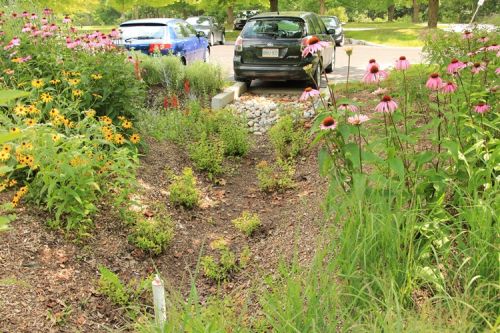Bioretention: Life Cycle Costs

Overview[edit]
Given that Bioretention is a widely used name and a general "catch-all" term for most vegetated LID practices that temporarily store stormwater runoff in depressed planting beds there are a number of configurations of the feature that can be used in various contexts and environments. Depending on native soil infiltration rate and physical constraints, the facility may be designed without an underdrain for full infiltration, with an underdrain for partial infiltration, or with an impermeable liner and underdrain for no infiltration/filtration only (i.e., a stormwater planters or biofilter) design. STEP conducted life cycle costs estimates for each of bioretention's 3 design configurations which can be viewed below. To design your own life cycle cost estimates that can be adapted to fit your project budget and unique development needs access the updated LCCT Tool here.
Bioretention (all 3 design scenarios): Includes pretreatment sump at inlet and assumes that rehabilitation of filter media bed is performed at 25 years.
- ↑ Performance Comparison of Surface and Underground Stormwater Infiltration Practices TECHNICAL BRIEF. Accessed Dec 12 2022. https://sustainabletechnologies.ca/app/uploads/2016/08/BioVSTrench_TechBrief__July2015.pdf